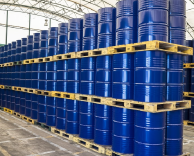Lubrication: Uses, Functions, Properties, and Maintenance
Introduction:
Lubrication is the foundation of mechanical efficiency, without which moving parts would wear out and overheat. Lubrication oil is necessary for operation, whether in automobiles, industrial systems or at power plants. An efficient lubrication system reduces friction as well as heat dissipation and energy loss, and is an important part of the equipment maintenance.

Importance of Lubrication in Industrial Applications
Lubrication is key to equipment performance across a variety of industries. Critical lube applications, flat plate, historical uses, Other critical lube applications
- Automotive: The engine lubrication system maintains smooth flow, reduces the wear of the moving parts of the engine, and prevents the engine from overheating.
- Manufacturing: Syntax helps lubricant oil in the reduction of friction on CNC machines, conveyors, and robotic arms.
- Mining and Construction: Heavy-duty lubricants for all types of equipment that protect from harsh environments and the toughest temperature conditions.
- Power Plant: Lubrication systems protect turbines, generators and compressors from extensive wear, extend equipment life and avoid serious standards of wear and tear.
- Food & Beverage: Food-grade lubricants are specially designed to maintain equipment cleanliness and pass the safety regulations.
Knowledge of the myriad applications of lubrication allows the industry to enhance performance and extend equipment life.

Key Functions of Lubrication
Lubrication is a multi-purpose function applied to ensure the longevity and reliability of machinery:
- Friction and Wear Reduction: Forms a sacrificial barrier to reduce contact and wear of metal surfaces.
- Cooling: Removes heat from the bearing's surface, which enables cooling of the components.
- Dirt / Dust and Metal Elimination: Oil lubricant serves to carry dirt/ dust and metal chips.
- Anti-Corrosion and Anti-Oxidant: Lubricants contain corrosion (rust) inhibitors to protect parts from rust and oxidation.
- Impact Absorption: Assists in absorbing impact loads, especially in high-speed, heavy-duty applications.
Different Lubrication Types and Their Applications
Various types of lubrication can be divided based on certain operating conditions:
- Hydrodynamic lubrication: Surfaces are separated by a viscous fluid film, which can occur in bearings and gears.
- Boundary Lubrication: A Thin layer of lubricant prevents solid-to-solid contact, usually manifesting under conditions of stop-start or slow-speed equipment.
- Mixed lubrication: A regime that includes both hydrodynamic and boundary lubrication, e.g., gearboxes and automotive engines.
- Elastohydrodynamic Lubrication: Present in rolling-element bearings, where local high pressures induce a transient thickening of the lubricant.
- Solid-Type Lubrication: Employs materials such as graphite and molybdenum disulfide in harsh environments and situations where a liquid lubricant is not suitable.
Choosing the correct lubrication type is essential to maximize performance and minimize maintenance costs.
Essential Lubrication Properties for Optimal Performance
The superior performance of a lubricant is based on its foundations:both:
- Viscosity: Viscosity defines the flow behavior and the film strength at different temperatures and loads.
- Thermal resistance: prevents lubricant degradation under load at high temperature.
- Oxidation Inhibition: inhibits the formation of sludge and varnish, prolonging the life of the lubricant.
- Load-Carrying Capacity: It helps in the lubricant to sustain the heavy pressures without failure.
- Water Resistant: Does not emulsify and gives optimum separation in moist conditions.
These lubricious properties are what determine how well a machine operates and for how long.
Follow our Blogs for more information about lubrication reliability - Click Here
Understanding Lubrication Systems and Their Mechanism
A system for providing lubricating oil under pressure to working circuit elements of a machine assures an optimum supply of lubricating oil to the machine elements. Typical lubricating systems include the following:
- Manual Lubrication: Requires regularly scheduled directional lubrication, with a grease gun or oil can.
- Automatic Oiling Systems: Oil is spread constantly to minimize downtime and maintenance.
- Splash Lubrication: Uses gears to splash lube around the gearbox.
- Forced Lubrication systems: Pumps oil under pressure to circulate oil for lubrication purposes.
Choosing the right lubrication system means better equipment reliability and a direct impact on operating costs.
Engine Lubrication System: A Vital Component for Efficiency
The importance of the engine lubrication system on vehicle performance:
- Ensures a continuous lubrication process to minimize friction and wear.
- Dissipates excess heat from the engine and cools the engine down.
- Cleans the engine by flushing out contaminants and internal metal particles.
- Prevent oxidation and corrosion, increase the engine life span.
Home Vehicle Maintenance Engine Lubrication System Keep your engine clean. It's critical. Regularly servicing the engine with new oil and filters is critical to maintain peak running performance and reliability.
Lubrication Maintenance Strategies for Equipment Longevity
Taking a proactive approach to lubrication maintenance will not only stop equipment from breaking but also aid in solving the issue of keeping it operating. Several basic maintenance procedures are recommended to help keep your vehicle in good working order. Items of maintenance are:
- Using the Right Lube: Ensure it is compatible with the manufacturer's recommendations.
- Tracing Lubrication Polluting: Keep in constant inspection of dirt, moisture ingression, and chipping.
- Creating the Lubrication Plan: Develop a preventive maintenance program to prevent failures.
- How Oil Analysis Works: Apply condition monitoring to catch wear before it starts.
- Use in the Right Amount: No under-lubricating or over-lubricating that damage would not be caused.

Common Lubrication Problems and Solutions
Lubrication issues that affect performance are common in industry:
- Dirty oil: Dirty Lubricants analysis is necessary to identify contaminants and enhance your filtration system.
- Viscosity Misconception: The right viscosity saves your parts from wearing out and withstanding too much heat.
- Bad Lubricant Choice: Oil should be matched to the application for reliable performance.
- Insufficient lubrication: The proper training and coverage of lubrication can enhance its performance.
Resolving these issues is key to equipment reliability over the long run.
Conclusion
Maintenance industrial lubrication that minimizes friction, limits wear, and reduces machinery life is key to industrial maintenance operations. Knowledge about lubrication types, properties, and maintenance methods assists industries in improving operations and reducing downtime.
Learn more about our services and industry insights by visiting our official LinkedIn page: Minimac Systems
FAQs:
- Minimizing friction and energy loss.
- Preventing wear and tear on machine components.
- Cooling down machinery by dissipating heat.
- Protecting surfaces from corrosion and contamination.
- Hydrodynamic lubrication – Full fluid film separates surfaces.
- Boundary lubrication – A thin lubricant layer prevents direct contact.
- Mixed lubrication – Combination of boundary and hydrodynamic lubrication.
- Elastohydrodynamic lubrication (EHL) – High-pressure lubrication for rolling elements.
- Solid lubrication – Uses materials like graphite or PTFE for extreme conditions.
- Manual lubrication (grease guns, oil cans).
- Automatic lubrication systems (controlled pumps for consistent lubrication).
- Splash lubrication (oil splashed by rotating parts).
- Forced lubrication (pressurized oil supply to critical components).
- Friction reduction – Prevents excessive heat and wear.
- Load carrying – Supports high-pressure applications.
- Corrosion prevention – Forms a protective layer on surfaces.
- Heat dissipation – Removes excess heat from components.
- Contaminant removal – Flushes out metal debris and dirt.
- Proper viscosity – Determines flow and film thickness.
- High thermal stability – Resists breakdown under heat.
- Oxidation resistance – Prevents sludge formation.
- Good load-bearing capacity – Withstands high pressures.
- Water resistance – Prevents emulsification and rusting.





